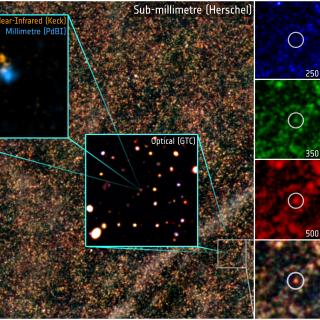Bibcode
Rossi, A.; Schulze, S.; Klose, S.; Kann, D. A.; Rau, A.; Krimm, H. A.; Jóhannesson, G.; Panaitescu, A.; Yuan, F.; Ferrero, P.; Krühler, T.; Greiner, J.; Schady, P.; Pandey, S. B.; Amati, L.; Afonso, P. M. J.; Akerlof, C. W.; Arnold, L. A.; Clemens, C.; Filgas, R.; Hartmann, D. H.; Küpcü Yoldaş, A.; McBreen, S.; McKay, T. A.; Nicuesa Guelbenzu, A.; Olivares, F. E.; Paciesas, B.; Rykoff, E. S.; Szokoly, G.; Updike, A. C.; Yoldaş, A.
Bibliographical reference
Astronomy and Astrophysics, Volume 529, id.A142
Advertised on:
5
2011
Journal
Citations
56
Refereed citations
49
Description
We present the results of a comprehensive study of the gamma-ray burst
080928 and of its afterglow. GRB 080928 was a long
burst detected by Swift/BAT and Fermi/GBM. It is one of the exceptional
cases where optical emission had already been detected when the GRB
itself was still radiating in the gamma-ray band. For nearly 100 s
simultaneous optical, X-ray and gamma-ray data provide a coverage of the
spectral energy distribution of the transient source from about 1 eV to
150 keV. In particular, we show that the SED during the main prompt
emission phase agrees with synchrotron radiation. We constructed the
optical/near-infrared light curve and the spectral energy distribution
based on Swift/UVOT, ROTSE-IIIa (Australia), and GROND (La Silla) data
and compared it to the X-ray light curve retrieved from the Swift/XRT
repository. We show that its bumpy shape can be modeled by multiple
energy-injections into the forward shock. Furthermore, weinvestigate
whether the temporal and spectral evolution of the tail emission of the
first strong flare seen in the early X-ray light curve can be explained
by large-angle emission (LAE). We find that a nonstandard LAE model is
required to explain the observations. Finally, we report on the results
of our search for the GRB host galaxy, for which only a deep upper limit
can be provided.
Appendix A is only available in electronic form at http://www.aanda.org
Related projects

Formation and Evolution of Galaxies: Observations in Infrared and other Wavelengths
This IAC research group carries out several extragalactic projects in different spectral ranges, using space as well as ground-based telescopes, to study the cosmological evolution of galaxies and the origin of nuclear activity in active galaxies. The group is a member of the international consortium which built the SPIRE instrument for the
Ismael
Pérez Fournon